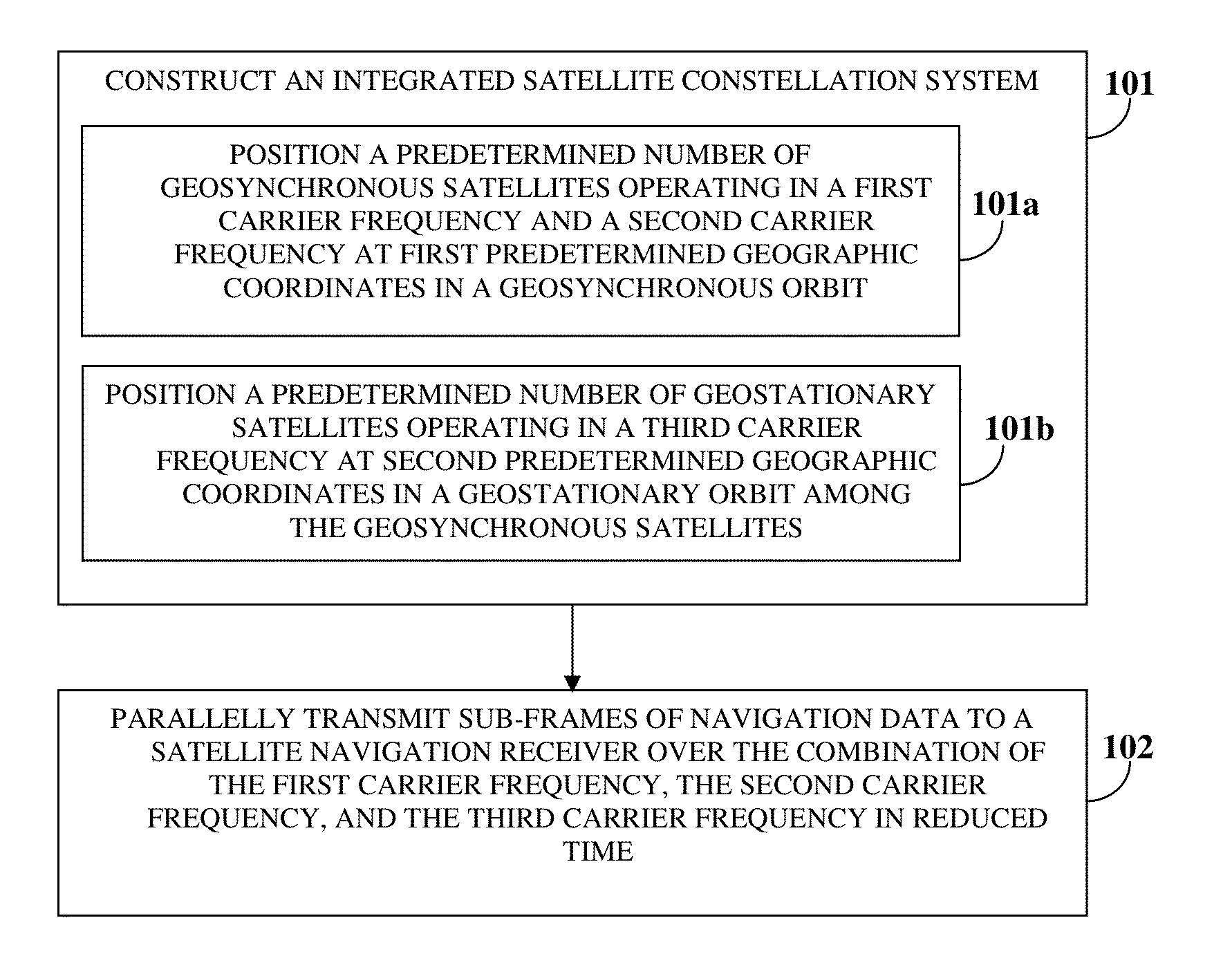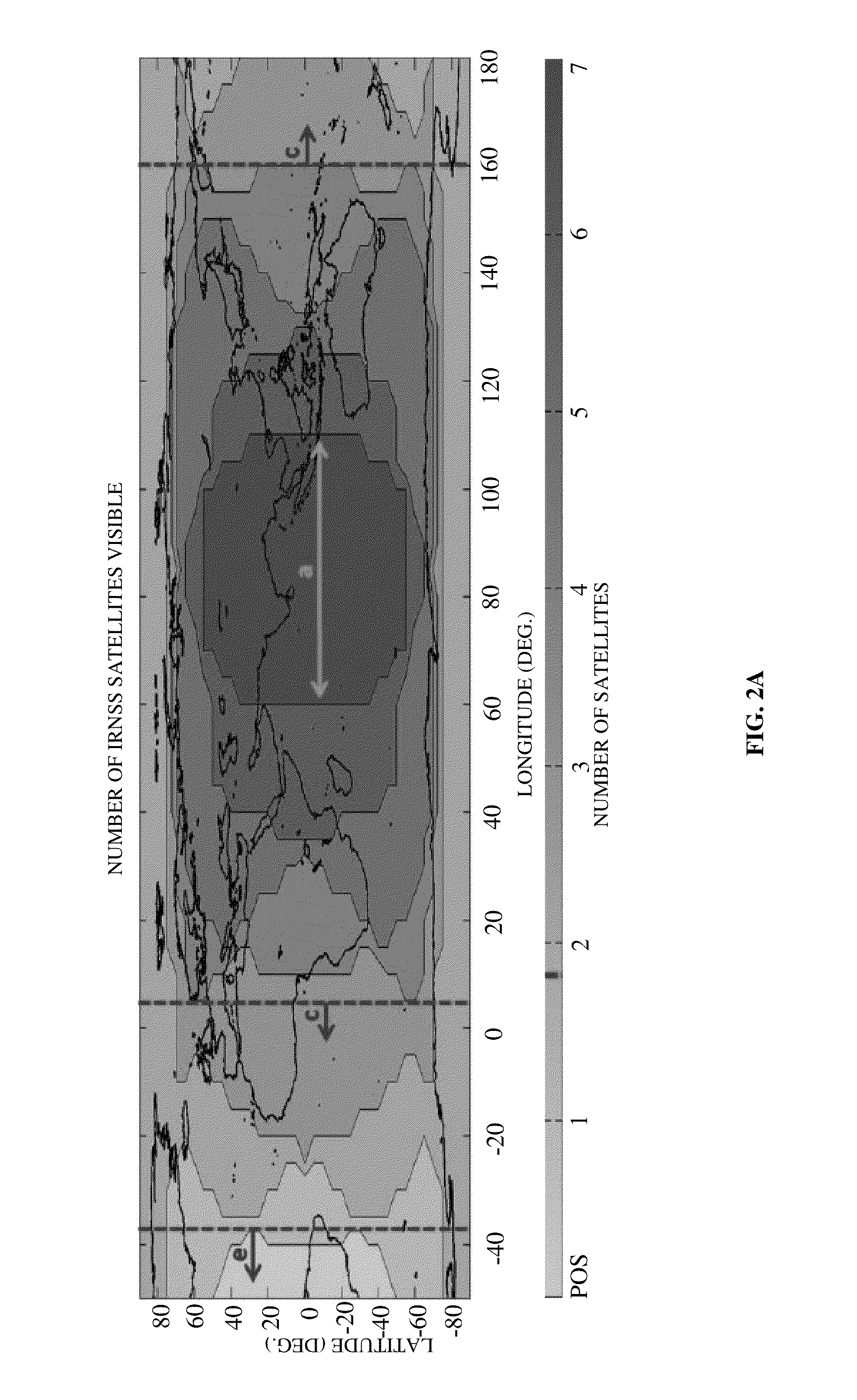Time To First Fix Optimization In A Satellite Navigation Receiver
a satellite navigation and optimization technology, applied in the field of time to first fix optimization in satellite navigation receivers, can solve problems such as denying civilian users from achieving optimal accuracy
- Summary
- Abstract
- Description
- Claims
- Application Information
AI Technical Summary
Benefits of technology
Problems solved by technology
Method used
Image
Examples
Embodiment Construction
[0043]FIG. 1 illustrates a method for reducing time to first fix in a satellite navigation receiver by constructing an integrated satellite constellation system. As used herein, the term “integrated satellite constellation system” refers to a combined satellite constellation architecture comprising the Indian regional navigational satellite system (IRNSS) and the global positioning system (GPS) aided geo-augmented navigation (GAGAN) system. The integrated satellite constellation system is also referred to as the “IRNSS+GAGAN system”. The IRNSS satellites are yet to be launched and are distributed as four geosynchronous satellites and three geostationary satellites. The four geosynchronous satellites are distributed in two planes, with two geosynchronous satellites in each plane. The IRNSS is configured to beam satellite signals in the L5 frequency band and the 51 frequency band. Two out of the three GAGAN satellites are already launched and deployed. The GAGAN satellites, namely, GS...
PUM
 Login to View More
Login to View More Abstract
Description
Claims
Application Information
 Login to View More
Login to View More - R&D
- Intellectual Property
- Life Sciences
- Materials
- Tech Scout
- Unparalleled Data Quality
- Higher Quality Content
- 60% Fewer Hallucinations
Browse by: Latest US Patents, China's latest patents, Technical Efficacy Thesaurus, Application Domain, Technology Topic, Popular Technical Reports.
© 2025 PatSnap. All rights reserved.Legal|Privacy policy|Modern Slavery Act Transparency Statement|Sitemap|About US| Contact US: help@patsnap.com



